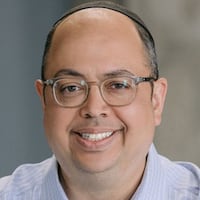"Obesity, and subsequently diabetes, is at epic proportions in the United States and unfortunately, public health officials feel that that is only going to get worse," said Michael Jett, wound care clinical nurse manager of the award-winning Wound Care Center and Hyperbaric Services at Atrium Medical Center.
“People making the dietary choices that they make, (and) coupled with being sedentary, it’s killing our nation.”
MORE: Middletown hospital honored for heart attack treatment
Chronic wounds affect millions of people in the United States, in part because of unmanaged or poorly managed diabetes. The Atrium center, which opened in 2015, has provided more than 1,400 patients specialized treatment, often preventing amputations and helping patients return to active lives, officials said.
It offers a variety of specialized wound care therapies for diabetic foot ulcers, pressure ulcers, infections and other chronic wounds which have not healed in a reasonable amount of time.
The center also offers other treatments, including negative pressure wound therapy, debridement, application of cellular-based tissue or skin substitutes to the wound and offloading or total contact casts.
It also uses via hyperbaric oxygen therapy, Jett said.
“Predominantly, it gets oxygen out beyond where red blood cells can get to,” he said. “It gets oxygen out farther into the tissue, which … spurs healing along.”
Secondly, it helps the white blood cells, which fight infection, Jett said.
MORE: Medical building boom continues to reverberate in Butler, Warren counties: What happened in 2018
The rising incidence of chronic wounds can be correlated to obesity, vascular disease, an aging population and radiation treatment side-effects. If left untreated, chronic wounds can lead to diminished quality of life and possibly amputation of an affected limb.
“We’re trying to salvage a limb using every modality that we can because if a person has to go onto an amputation, it’s really dangerous and it can really negatively impact their life expectancy,” Jett said.
Patients are frequently referred by their primary care physician, who can order a hemoglobin A1c blood test. The program operates by appointment.
After diagnosis, the center works with patients to emphasize that diabetes is a manageable condition, “so long as they make the right lifestyle choices,” Jett said.
“One of our biggest challenges here is being able to successfully encourage our patients to make great lifestyle choices to optimize their health and to, as close as possible, make sure that … their life expectancy is what it should be,” he said.
Healogics, the nation’s leading and largest wound care management company, recently recognized the Wound Care Center at Atrium Medical Center with a national award for clinical excellence, the Robert A. Warriner III, M.D., Center of Excellence award.
The award recognizes outstanding clinical outcomes for at least two consecutive years, including patient satisfaction higher than 92 percent, and a wound healing rate of at least 91 percent in less than 30 median days.
The latest honor continues honors for the Wound Care Center at Atrium. In addition to being named Center of the Year for a geographical region in 2017, Healogics identified Atrium’s wound center as top-performing Center of the Year nationwide for 2017.
Healogics manages three wound care centers Premier Health: the Wound Care Center at Atrium, Miami Valley Hospital South in Centerville and Upper Valley Medical Center in Troy.
Overall, Healogics manages approximately 750 wound care centers nationwide and in Great Britain. Because of that, the Wound Care Center at Atrium sees hundreds of thousands of wounds, in aggregate, each year, Jett said.
“The volume of wounds that we take care of as a corporation allows us to have the largest repository of data on wound care management in the world,” he said.
The Center for Wound Healing at Fort Hamilton Hospital, which also is a part of the Healogics Network, has offered hyperbaric oxygen therapy since it opened in 2006.
It has earned various awards over the years, including Healogics’ Center of Distinction award for clinical excellence in 2013 and 2016, and Healogics’ Center of Excellence award in 2014, 2017 and 2018.
MORE: Fort Hamilton’s new special care nursery is latest Butler County effort to help babies and mothers
The biggest challenge is awareness of advanced wound healing services and how the center works with each patient to develop an individualized plan of care, according to Andre Edwards, the center’s director, who said there are 45,600 diabetics in the greater Hamilton area and around 7,800 patients with chronic wounds.
“To help create awareness, staff go out into the community and educate providers, facilities, and other health care agencies about our services,” Edwards said. “This will allow those providers to identify patients in need, and to get them to the center for the healing help they need.”
DIABETES IN OHIO: BY THE NUMBERS
1.3 million: approximate amount of people in Ohio who have diabetes
286,000: amount of people who have diabetes in Ohio but don’t know it, greatly increasing their health risk.
3,071,000: amount of people in Ohio, 35.3 percent of the adult population, have prediabetes with blood glucose levels higher than normal but not yet high enough to be diagnosed as diabetes.
67,000: amount of people in Ohio diagnosed each year with diabetes.
SOURCE: American Diabetes Association
About the Author

